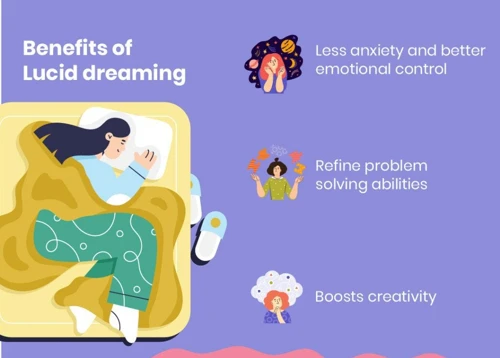Unlocking Creativity: How Lucid Dreaming Boosts Imagination
Have you ever wished you could tap into the untapped power of your imagination? Imagine being able to explore uncharted territories of ideas, visualize vivid and detailed images, and create masterpieces limited only by the boundaries of your mind. Believe it or not, there is a way to awaken and enhance your creativity, and it’s through the fascinating practice of lucid dreaming. Lucid dreaming allows you to become conscious and aware within your dreams, giving you the ability to control and manipulate your dream world. But how does it work? And how can lucid dreaming be used as a tool for unlocking your imagination? In this article, we will delve into the science behind lucid dreaming, explore its benefits for creativity and imagination, discover techniques to induce lucid dreams, and explore exercises that can boost your creative abilities. So, fasten your seatbelts and get ready for an extraordinary journey into the depths of your mind, where dreams and imagination intertwine.
What is Lucid Dreaming?
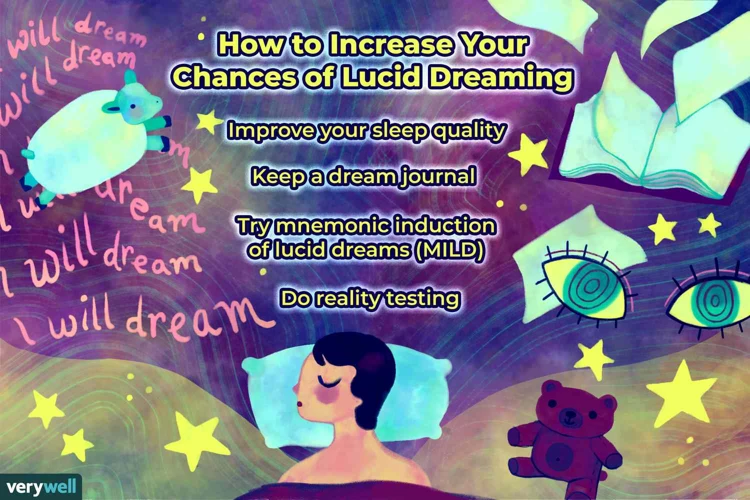
Lucid dreaming is a remarkable phenomenon that occurs when you become aware that you are dreaming while still in the midst of the dream itself. In other words, it is the ability to recognize and realize that you are in a dream state and have the power to control and shape the dream environment. When you are lucid dreaming, you can actively participate in and manipulate your dreams, allowing you to experience extraordinary adventures, explore fantastical landscapes, and interact with dream characters. This state of consciousness offers an incredible opportunity to blend the boundaries between reality and imagination, enabling you to engage in a world where anything is possible. Lucid dreaming holds immense potential for personal growth, enhanced creativity, and expanding the limits of human imagination. It offers an avenue for individuals to tap into their subconscious mind and unleash their artistic potential, as well as the opportunity to enhance problem-solving skills and find innovative solutions to real-life challenges. To better understand the science behind lucid dreaming and its impact on creativity and imagination, let’s delve deeper into the fascinating world of dreams and discover how they can open doors to new realms of possibility.
The Science Behind Lucid Dreaming
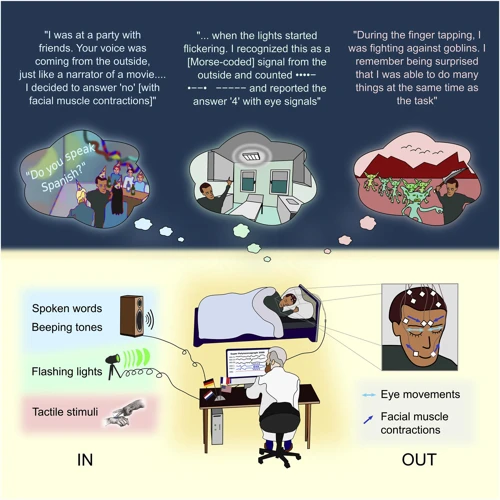
The science behind lucid dreaming revolves around the understanding of two key factors: REM sleep and neurotransmitters. Rapid Eye Movement (REM) sleep is a phase of sleep characterized by rapid movement of the eyes, increased brain activity, and vivid dreaming. During this stage, the brain becomes highly active, similar to when we are awake. Lucid dreaming predominantly occurs during REM sleep, as this is when our dreams are most vivid and memorable. Neurotransmitters, such as acetylcholine and serotonin, play a crucial role in the occurrence of lucid dreams. Acetylcholine, which is associated with wakefulness and attention, is believed to be responsible for maintaining consciousness within the dream state. Serotonin, on the other hand, helps regulate mood and emotion, and its levels have been found to influence dream clarity and stability. Understanding the science behind lucid dreaming provides insights into how we can harness this phenomenon to enhance our creativity, problem-solving skills, and even artistic potential. To explore the profound impact of lucid dreaming on creativity and imagination, continue reading about its artistic potential and how it can enhance problem-solving abilities.
REM Sleep and Lucidity
One of the crucial factors in understanding lucid dreaming is the role of REM sleep. REM (Rapid Eye Movement) sleep is a distinct stage in the sleep cycle characterized by rapid eye movements, increased brain activity, and vivid dreaming. During REM sleep, the brain becomes highly active, resembling wakefulness, while the body remains in a state of temporary paralysis to prevent acting out dreams. It is during this stage that lucid dreaming is most likely to occur. Studies have shown that the frequency of lucid dreams is closely associated with the amount of time spent in REM sleep. The more time an individual spends in REM sleep, the higher the chances of experiencing lucidity within dreams. This suggests that the neurophysiological processes happening during REM sleep play a significant role in facilitating conscious awareness and control within the dream state. Whether through recognizing dream signs, performing reality checks, or practicing specific techniques, individuals can increase their ability to attain lucidity during REM sleep and unlock the potential for vivid and imaginative experiences. For artists and creative individuals, the link between REM sleep and lucidity opens up a world of artistic potential, where they can actively engage in their dreams and draw inspiration from their vivid dreamscapes. To explore this further and understand how lucid dreaming can enhance artistic creativity, check out our article on the artistic potential of lucid dreams.
The Role of Neurotransmitters
Neurotransmitters play a crucial role in the process of lucid dreaming. These chemical messengers in the brain are responsible for transmitting signals between neurons, allowing for various functions and processes to occur. When it comes to lucid dreaming, two neurotransmitters, in particular, have been found to play a significant role: acetylcholine and dopamine.
Acetylcholine: Acetylcholine is a neurotransmitter that is closely associated with REM (Rapid Eye Movement) sleep, the stage of sleep where most dreaming occurs. Studies have shown that acetylcholine levels are higher during REM sleep, which is believed to contribute to the vivid and immersive nature of dreams. Acetylcholine is also involved in memory and learning processes, and it is thought that higher levels of this neurotransmitter during REM sleep may facilitate lucidity by enhancing the brain’s ability to recognize and remember that it is dreaming.
Dopamine: Dopamine is another neurotransmitter that plays a role in lucid dreaming. Dopamine is known for its involvement in motivation, reward, and pleasure. Research suggests that increased levels of dopamine in the brain may encourage lucid dreaming experiences by promoting wakefulness and alertness during sleep. It is believed that the release of dopamine during REM sleep can heighten the brain’s capacity for self-awareness, leading to the recognition of the dream state and the ability to maintain consciousness within the dream.
Neurotransmitters such as acetylcholine and dopamine play a critical role in the occurrence of lucid dreaming. The increase in acetylcholine during REM sleep and the release of dopamine contribute to the vividness of dreams and the brain’s ability to become lucid within them. By understanding the role of these neurotransmitters, we can further explore techniques and methods that may enhance lucid dreaming and unlock the potential of our imagination.
Benefits of Lucid Dreaming for Creativity and Imagination
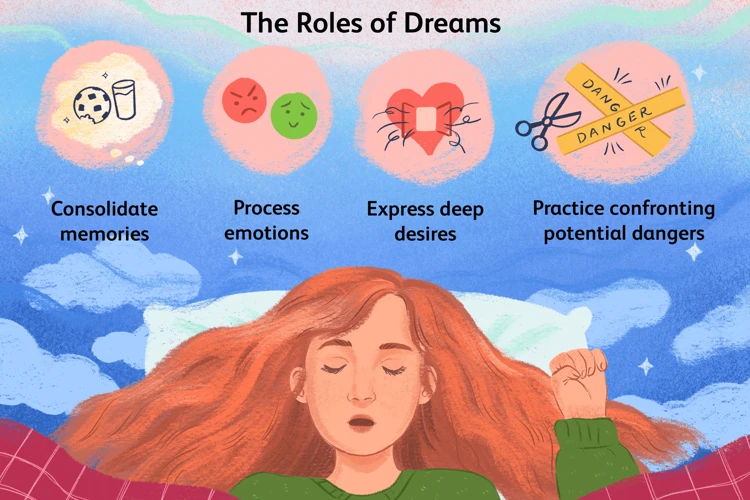
Lucid dreaming brings with it a multitude of benefits for creativity and imagination. One of the most significant advantages is the enhancement of brain plasticity. When you are lucid dreaming, you have the ability to actively engage in creative activities within your dream world, such as painting, writing, or composing music. This practice exercises and stimulates your brain, reinforcing neural pathways associated with creativity and imagination. Lucid dreaming allows you to access the subconscious mind, which is a rich source of inspiration and ideas. By delving into the depths of your subconscious, you can tap into hidden memories, emotions, and experiences that can fuel your creative endeavors. Additionally, lucid dreaming provides a platform for exploring abstract concepts, pushing the boundaries of your imagination, and creating new connections between seemingly unrelated ideas. With these advantages in mind, it’s clear that lucid dreaming is a powerful tool for unlocking the full potential of your creativity and imagination.
Enhanced Brain Plasticity
Enhanced brain plasticity is one of the key benefits of lucid dreaming when it comes to boosting creativity and imagination. Brain plasticity, also known as neuroplasticity, is the brain’s ability to adapt and change throughout a person’s lifetime. It involves the formation of new neural connections and the reorganization of existing ones. Lucid dreaming promotes enhanced brain plasticity by offering a unique opportunity to engage in vivid and immersive experiences within the dream world. When you are lucid dreaming, you have the freedom to explore and experiment with different scenarios, settings, and actions, which stimulates your brain to create and strengthen new neural pathways. This process allows for improved cognitive flexibility, innovation, and the ability to think outside the box. Lucid dreaming exercises various cognitive functions such as memory, attention, and problem-solving skills, all of which contribute to enhanced brain plasticity. During lucid dreaming, the brain experiences a surge in activity, particularly in regions associated with creativity and imagination, such as the prefrontal cortex. This increased neural activation during lucid dreaming helps to strengthen connections between different areas of the brain, fostering a network that is more conducive to generating and expressing creative ideas. Thus, by engaging in regular lucid dreaming practices, individuals can tap into enhanced brain plasticity, leading to a boost in their creative thinking abilities and a greater capacity for imagination.
Accessing the Subconscious Mind
Accessing the subconscious mind is a key benefit of practicing lucid dreaming. When we dream, our subconscious mind takes over, presenting us with images, emotions, and ideas that may not be readily accessible during our waking hours. Lucid dreaming allows us to consciously navigate this realm, providing a unique opportunity to explore the depths of our subconscious and tap into our innermost thoughts and desires. By becoming aware within the dream, we can actively engage with the symbols, metaphors, and messages that arise, gaining valuable insights into our own psyche. This process of self-reflection and exploration can unlock a wealth of creative inspiration and help us gain a deeper understanding of ourselves and our emotions.
One powerful technique for accessing the subconscious mind during lucid dreaming is through dream incubation. By setting a clear intention before sleep, such as asking a specific question or seeking guidance on a particular problem, we can invite our subconscious to provide us with answers or insights through our dreams. This practice allows us to tap into the vast well of knowledge that resides within us, guiding us towards creative solutions or uncovering hidden aspects of our imagination.
Another way lucid dreaming allows us to access the subconscious mind is by providing a safe space for exploring and working through emotional experiences. During a lucid dream, we can confront and process unresolved emotions, fears, or traumas in a controlled environment. This can lead to healing and personal growth, as well as providing a rich source of emotional material to draw upon in artistic endeavors.
Lucid dreaming serves as a gateway to our subconscious mind, granting us the ability to explore and interact with the deep recesses of our psyche. Through this process, we can gain profound insights, unlock hidden creativity, and access a world of inspiration that lies beneath the surface of our conscious awareness.
Techniques for Inducing Lucid Dreams
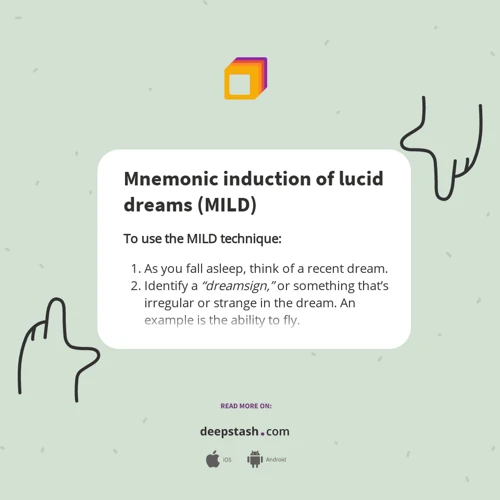
There are various techniques that can help induce lucid dreams, allowing you to enter a state of consciousness where you are aware that you are dreaming. One effective technique is reality testing. This involves regularly questioning your surroundings and checking for inconsistencies throughout the day. By developing a habit of critically analyzing your surroundings, you will be more likely to carry out this reality testing in your dreams as well. Another technique is the wake-back-to-bed method. This involves setting an alarm to wake yourself up after a few hours of sleep, and then consciously staying awake for a short period of time before going back to sleep. This method takes advantage of the fact that the REM sleep stage, during which dreams occur, becomes longer and more pronounced later in the sleep cycle. By waking up and then returning to sleep, you increase the likelihood of entering this REM stage and having a lucid dream. Experimenting with these techniques can significantly increase your chances of having lucid dreams and exploring the vast possibilities of your imagination while you sleep.
Reality Testing
Reality testing is a fundamental technique used to determine whether you are in a dream or in a waking state. By conducting reality tests throughout your day, you train your mind to question the nature of reality, making it more likely for you to question the reality within your dreams as well. There are several reality testing methods that you can incorporate into your daily routine. One popular method is the “finger count” test, where you simply count the number of fingers on your hand while asking yourself if you are dreaming. In a dream, the number of fingers may fluctuate or appear distorted, alerting you to the fact that you are in a dream state. Another common reality test is the “light switch” test, where you try to turn on a light switch. In dreams, light switches often fail to work, providing a strong indication that you are in a lucid dream. Other reality testing techniques include looking at your reflection in a mirror, trying to read a text or a clock, or pinching yourself to see if you feel pain. By regularly practicing reality testing during your waking hours, you cultivate the habit of questioning reality, which can carry over into your dream state. This increases the likelihood of achieving lucidity and ultimately unlocking the power of your imagination within your dreams. So, start integrating reality testing into your daily routine and watch as your ability to become lucid in dreams gradually improves, opening the door to endless creative possibilities.
Wake-Back-to-Bed Method
The Wake-Back-to-Bed (WBTB) method is a popular technique for inducing lucid dreams. This method involves waking up from sleep and then returning to bed with the intention of entering a lucid dream state. Here’s how it works:
1. Set your intention: Before going to sleep, firmly establish the intention in your mind that you will wake up in the middle of the night for the WBTB method. Repeat to yourself, “I will wake up during the night and have a lucid dream.”
2. Set an alarm: Set an alarm to wake you up after approximately 4-6 hours of sleep. This will usually be in the middle of a REM sleep cycle, where dreams are most vivid and easier to recall.
3. Wake up and stay awake: When the alarm goes off, turn it off and get out of bed. Engage in a quiet activity that requires minimal mental stimulation, such as reading a book or writing in a dream journal. Avoid bright lights or screens that can interfere with your ability to fall back asleep.
4. Focus on lucid dreaming: During this time, remind yourself of your intention to have a lucid dream. Visualize yourself becoming aware within a dream and imagine the vivid sensations and experiences you will have.
5. Go back to sleep: After approximately 20-30 minutes of being awake, return to bed. Lie down in a comfortable position and relax your body and mind. Use relaxation techniques such as deep breathing or progressive muscle relaxation to help you fall asleep.
6. Enter the lucid dream: As you fall back asleep, keep the intention of lucid dreaming in your mind. You may find yourself entering a dream state with heightened awareness, allowing you to recognize that you are dreaming and become lucid.
The WBTB method capitalizes on the fact that REM sleep, where dreams occur, often occurs in longer durations later in the night. By waking up during this time and then going back to sleep, you increase your chances of entering a lucid dream. This technique can be especially effective when combined with other lucid dreaming techniques such as reality testing and visualization practice. Remember, consistency and persistence are key when experimenting with different techniques to induce lucid dreams.
Exercises to Boost Creativity through Lucid Dreaming
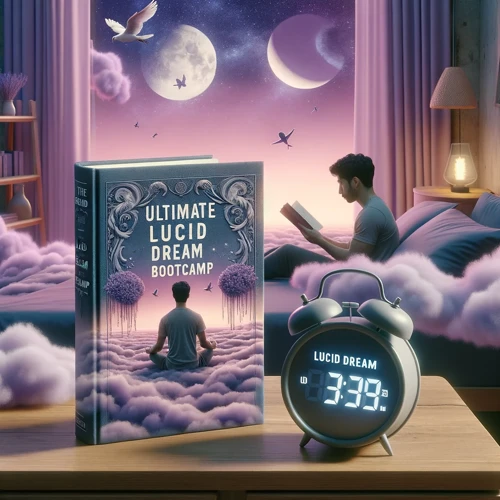
One of the most exciting aspects of lucid dreaming is its potential to boost creativity and unlock the hidden depths of imagination. There are various exercises that can help harness the power of lucid dreaming to enhance your creative abilities. One effective exercise is visualization practice. During lucid dreams, you can intentionally visualize specific scenes, objects, or scenarios, allowing you to vividly experience and explore your creative ideas. Another exercise involves using lucid dreams for creative problem-solving. By entering a lucid dream with a specific problem or challenge in mind, you can tap into your subconscious mind to generate unique insights and innovative solutions. These exercises not only stimulate your imagination but also provide a practical platform for translating creative ideas into reality. Embracing these techniques can lead to profound artistic and intellectual growth, as well as a deeper understanding of the creative process.
Visualization Practice
Visualization practice is a powerful technique that can be used to enhance creativity during lucid dreaming. By intentionally visualizing specific images, scenes, or scenarios in your mind, you can actively shape and direct your dreams towards desired creative outcomes. Here are a few strategies to incorporate visualization into your lucid dreaming practice:
1. Create a Dream Vision Board: Similar to a vision board used in waking life, you can create a visual collage of images, words, and symbols that represent your creative goals and aspirations. Place this dream vision board in a prominent location where you can see it before going to sleep. By reviewing and focusing on the images and ideas on your dream vision board, you are programming your subconscious mind to manifest these elements in your dreams.
2. Imagine Creative Scenarios: Before falling asleep, spend a few moments vividly imagining yourself engaging in creative activities of your choice. Picture yourself painting, writing, dancing, or performing any form of creative expression. Visualize the details – the colors, sounds, textures, and emotions associated with the scene. Immerse yourself in this mental imagery, and let it seep into your dreams, allowing your creativity to flourish.
3. Visualize Problem-Solving: If you are facing a creative block or need a solution to a specific problem, use your lucid dreaming practice as a platform for visualization-based problem-solving. Before sleep, clearly define the problem or challenge you are facing. Then, imagine yourself finding creative solutions or experiencing breakthrough moments. Visualize the steps you take, the obstacles you overcome, and the positive outcomes you achieve. Let this visualization guide your dreams towards innovative ideas and fresh perspectives.
Remember, the key to effective visualization practice during lucid dreaming is to engage as many senses as possible within your imagination. The more vivid and detailed your visualizations become, the stronger the impact they will have on your dream experiences. Harness the power of visualization, and watch as your creative potential expands to new heights within the realm of lucid dreaming.
Creative Problem-Solving
Creative problem-solving is a skill highly coveted in many aspects of life, whether it be in the workplace, personal relationships, or pursuing personal goals. Lucid dreaming has the power to enhance this skill by providing a unique platform for problem-solving within the dream world. When you have control over your dreams, you can actively engage with challenges and obstacles that arise, allowing you to think outside the box and find creative solutions. As you navigate through the dream landscape, your mind becomes more flexible and open to unconventional ideas and approaches. The boundless possibilities and lack of limitations in lucid dreams enable you to experiment with different solutions, test hypotheses, and push the boundaries of what is possible. This process of problem-solving in lucid dreams can then translate into the waking world, as your mind becomes more adept at thinking creatively and finding innovative solutions to real-life challenges. Whether you are an artist seeking inspiration, an entrepreneur searching for new business ideas, or an individual looking to overcome personal hurdles, harnessing the power of lucid dreaming can unlock your potential for creative problem-solving and open doors to new opportunities. So, the next time you find yourself faced with a difficult problem, consider taking it to the dream world and unlock your imaginative problem-solving skills.
Lucid Dreaming as a Tool for Artists and Writers

Lucid dreaming holds immense value for artists and writers as a powerful tool for inspiration, idea generation, and pushing the boundaries of their imagination. When artists and writers engage in lucid dreaming, they are able to harness the boundless creative potential of their minds and explore new artistic horizons. Lucid dreaming provides a unique opportunity to tap into the depths of the subconscious, where hidden ideas and images reside, waiting to be discovered. By actively participating in their dreams and shaping dream scenarios, artists and writers can encounter vivid and fantastical landscapes, encounter intriguing characters, and experience situations that defy the constraints of reality. This immersive experience serves as a well of inspiration, offering a wealth of material to draw upon when creating their artworks or crafting their stories. Additionally, lucid dreaming allows artists and writers to experiment with different styles, themes, and concepts without any limitations, leading to innovative and original creations. Whether seeking inspiration for a painting, searching for a breakthrough in writing, or simply expanding their artistic repertoire, lucid dreaming provides a powerful gateway to unlocking the fullest extent of creative potential.
Inspiration and Idea Generation
One of the most valuable benefits of lucid dreaming for artists and writers is the incredible wellspring of inspiration and idea generation it provides. When you are able to be fully conscious and in control within your dreams, you have the opportunity to witness and experience extraordinary scenes and concepts that may be impossible to imagine in waking life. These unique dreamscapes can spark a flood of creative ideas and concepts that can be translated into various artistic mediums. Additionally, lucid dreaming allows you to access the vast reserves of your subconscious mind, where hidden memories, emotions, and thoughts reside. This deep dive into your subconscious can uncover buried ideas and untapped creativity, providing a rich source of inspiration for your artistic endeavors. Another advantage is the ability to interact with dream characters and seek their perspectives and insights, which can greatly stimulate idea generation. Lucid dreaming provides artists and writers with a playground of infinite possibilities and a gateway to explore new dimensions of creativity that can revolutionize their work. So, if you’re looking for a wellspring of inspiration and a plethora of innovative ideas, lucid dreaming may be the key to unlocking your artistic potential.
Expanding the Boundaries of Imagination
Expanding the boundaries of imagination is one of the most significant benefits of lucid dreaming. When you enter a lucid dream, you are no longer bound by the rules and limitations of the physical world. Your imagination can run wild, and you have the power to create and experience things that may defy logic and reason. This newfound freedom allows you to explore uncharted territories, visit imaginary worlds, and encounter fantastical characters. You can let your imagination soar as you conjure up vibrant landscapes, vibrant colors, and intricate details that surpass what the conscious mind can conceive. In a lucid dream, you can become a character in your own story, shaping the plot, and interacting with the dream environment in ways you never thought possible. This ability to step outside the confines of reality fosters a sense of wonder and curiosity, fueling your creative endeavors. As you push the limits of your imagination within the dream realm, you will find that your creative capacities expand and evolve in the waking world as well. Lucid dreaming enables you to tap into a wellspring of inspiration and ideas that can be channeled into various artistic pursuits, such as painting, writing, music, and more. By consistently engaging in lucid dreaming and embracing the boundless possibilities it offers, you can unlock the true potential of your imagination and create works of art that reflect the depths of your creative spirit, providing a sense of fulfillment and joy unlike any other. So, dare to dream lucidly, and let your imagination take flight into uncharted territories of creativity.
Lucid Dreaming for Personal Growth and Exploration
Lucid dreaming not only serves as a powerful tool for enhancing creativity and imagination but also holds immense potential for personal growth and exploration. By gaining control over your dreams, you can actively engage in self-discovery and overcome creative blocks that may be hindering your artistic expression. Through lucid dreaming, you have the opportunity to delve into the depths of your subconscious mind, uncover hidden beliefs and fears, and work towards personal transformation and growth. This practice can be particularly beneficial for artists, writers, and individuals seeking inspiration, as it allows for the exploration of symbolism and archetypes present in dreams. Lucid dreaming opens a gateway to understanding the deeper layers of your psyche and harnessing their potential in your waking life. It offers an invitation to expand your consciousness, unlock your true potential, and embark on a journey of self-exploration like no other.
Overcoming Creative Blocks
Creative blocks can be a frustrating and discouraging experience for artists, writers, and creators of all kinds. These blocks can manifest as a lack of inspiration, a feeling of being stuck, or the inability to generate new ideas. However, lucid dreaming can serve as a powerful tool to overcome these creative blocks and find renewed inspiration. When you become lucid in a dream, you have the opportunity to engage with your creative mind on a deeper level, unencumbered by the limitations and expectations of the waking world. This state of conscious dreaming allows you to step into a realm where imagination is limitless, and ideas flow freely. During lucid dreams, you can actively explore creative landscapes, interact with imaginary characters, and experiment with different artistic techniques or writing styles. By doing so, you can break free from the constraints that may be holding you back in your waking life and discover new approaches and perspectives. Lucid dreaming provides a safe and supportive environment to let your creativity run wild, allowing you to explore unconventional ideas and push the boundaries of your artistic expression. So, the next time you find yourself facing a creative block, consider diving into the world of lucid dreams to unlock your potential and inspire your artistic endeavors.
Exploring Symbolism and Archetypes
Symbolism and archetypes play a significant role in our dreams and can offer valuable insights into our subconscious mind. When lucid dreaming, we have the unique ability to actively explore and engage with the symbols and archetypal figures that arise in our dreams. These symbols may represent deep-seated emotions, desires, fears, or aspects of our personality that have been repressed or overlooked in our waking life. By consciously interacting with these symbols and archetypes, we can gain a deeper understanding of ourselves and the hidden layers of our psyche.
During lucid dreams, we can choose to confront and communicate with these symbols, allowing us to unravel their meanings and significance. This process of exploration and examination can be highly transformative, leading to personal growth and self-awareness. For artists and writers, lucid dreaming provides a rich tapestry of symbolism to draw inspiration from. The vivid and immersive dreamscapes serve as a creative playground, where artists can draw upon the rich visual imagery and incorporate it into their works of art. Writers can weave symbolism and archetypal figures into their narratives, adding depth and complexity to their storytelling.
Exploring symbolism and archetypes through lucid dreaming can also have a profound impact on our waking life. The insights gained from these experiences can influence our understanding of ourselves, our relationships, and the world around us. By unlocking the secrets hidden within our dreams, we gain access to a wellspring of inspiration and wisdom that can shape our creative endeavors and enrich our lives.
Lucid dreaming offers a gateway to explore the depths of symbolism and archetypes within our dreams. This exploration not only enhances our creativity but also deepens our understanding of ourselves and the human experience. By embracing the power of lucid dreaming, we open ourselves up to a world of infinite possibilities and endless discovery. So, let your dreams be your guide as you embark on a journey of self-discovery and creative exploration.
Conclusion
In conclusion, lucid dreaming is a powerful tool for unlocking and enhancing creativity and imagination. By becoming aware and conscious within our dreams, we can tap into the unlimited potential of our subconscious mind. Through lucid dreaming, we can explore new ideas, visualize vibrant images, and think outside the box. The benefits of lucid dreaming for creativity are manifold. It enhances brain plasticity, allowing for the formation of new connections and the integration of diverse information. Lucid dreaming also grants us access to our subconscious mind, where ideas, insights, and inspiration reside. Techniques such as reality testing and the wake-back-to-bed method can help induce lucid dreams, giving us the ability to harness the full potential of our imagination. Moreover, exercises like visualization practice and creative problem-solving in lucid dreams can further amplify our creativity. For artists and writers, lucid dreaming offers a wellspring of inspiration and a means to push the boundaries of imagination. It enables us to overcome creative blocks, explore symbolism, and tap into the collective unconscious. Ultimately, embracing the practice of lucid dreaming can lead to personal growth, exploration, and a greater understanding of ourselves and the world around us. So, unlock the door to your imagination, dive into the world of lucid dreaming, and watch as your creativity soars to new heights.
Frequently Asked Questions
What are the stages of sleep and when does lucid dreaming occur?
Sleep consists of multiple stages, including non-rapid eye movement (NREM) and rapid eye movement (REM) sleep. Lucid dreaming typically occurs during REM sleep, which is characterized by increased brain activity and vivid dreaming experiences.
Can anyone learn how to lucid dream?
Yes, with practice and dedication, anyone can learn how to lucid dream. It may take time and effort, but by using various techniques and exercises, most individuals can develop the ability to become conscious within their dreams.
Is lucid dreaming the same as lucid sleep or conscious sleep?
No, lucid dreaming is different from lucid sleep or conscious sleep. Lucid dreaming specifically refers to being aware and in control of your dreams while you are sleeping. Lucid sleep or conscious sleep, on the other hand, refers to a state of awareness and conscious experience during sleep without necessarily being in a dream state.
What are reality testing techniques for inducing lucid dreams?
Reality testing techniques involve regularly questioning your reality throughout the day to increase awareness, which can carry over into your dream state. Examples include performing reality checks like trying to push your finger through your hand or checking the time on multiple occasions to see if it changes.
Can lucid dreaming improve problem-solving skills?
Yes, lucid dreaming can enhance problem-solving skills. The ability to consciously control and manipulate dream scenarios can provide a unique platform for exploring creative solutions and overcoming challenges in a simulated setting.
How does lucid dreaming enhance creativity?
Lucid dreaming enhances creativity by allowing access to the vast landscapes of the subconscious mind. It provides an opportunity to explore and interact with imagery, ideas, and symbols that can serve as inspiration and influence artistic endeavors.
Are there any risks or side effects associated with lucid dreaming?
Lucid dreaming is generally considered safe and does not have any significant risks or side effects. However, individuals who experience sleep disorders or mental health conditions should consult with a healthcare professional before engaging in lucid dreaming practices.
Can lucid dreaming be used to overcome creative blocks?
Absolutely! Lucid dreaming can be a valuable tool for overcoming creative blocks. By entering the dream state with the intention of finding creative solutions or experiencing new perspectives, individuals can tap into their subconscious mind and discover fresh ideas and inspiration.
What is visualization practice in lucid dreaming?
Visualization practice involves mentally imagining and creating detailed images, scenarios, or environments during wakefulness as a way to increase visualization abilities in lucid dreams. It can be a helpful technique for enhancing creative visualization and manifesting desired dream experiences.
Can lucid dreaming be therapeutic?
Yes, lucid dreaming has been explored as a therapeutic tool for various purposes. It can be utilized to confront fears, process emotions, and engage in self-reflection. Additionally, lucid dreaming may offer insights into personal growth and self-discovery.

